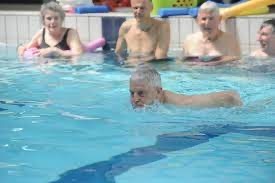
TDI are often asked for support by organisations working with clients with cognitive impairments (those who used to be described as having 'learning disabilities', or those with diseases such as Alzheimers). These organisations may be working for the first time with a client who has committed sexual offences, or worried about the boundaries between risky client behaviour and sexual offences. Over many years, TDI has developed training for organisations around this issue, applying our expertise in the area of sexual harm prevention along with research and inputs from experts in the field. You can find out more about this training on our Training page, but in this blog post we'll highlight some of the key things you should know.
It is unclear whether individuals with cognitive impairments present more of a risk of causing sexual harm than the general population. Studies differ in their estimates and we have no way of quantifying the potential under-reporting of incidents, such as in residential settings. So we need to think about the impacts of social and situational factors – what creates a greater risk that our client may become involved in sexually harmful behaviour, as a perpetrator or a victim, and what can we do to reduce that?
One of the major issues around clients with cognitive impairments is the possibility of disinhibited behaviour. This is behaviour which is inappropriate in the context in which it occurs, which the person does because the normal social inhibitors – formal rules or informal social norms – are not in place. For some clients, such as those with diseases like Alzheimer’s or those suffering the after-effects of chronic drug consumption, this can be because the inhibitors are forgotten or the context is not understood. For others, such as those with some developmental impairments, it is because the rules and norms are difficult to understand or apply.
A lot of this behaviour will be innocuous, but some can slip into sexually inappropriate behaviour or sexual harm. These can include sexualised comments, sexual touching of oneself, indecent exposure, inappropriate touching of others or overt attempts to coerce others into sexual activity. They may or may not be intended as sexual, but could be interpreted as such.
When responding to such behaviours, it is important to try and understand, as far as possible, both the behaviour and its intent. Someone indecently exposing themselves, for example, could be doing so because they are uncomfortable – and that is the problem which needs to be solved. Similarly, someone who is inappropriately touching may be doing so on the basis of mistaken identity, acting in a way which would be appropriate if it were correctly directed. We need to respond to these actions compassionately, as it can be difficult for our clients to understand why we are preventing them from doing things.
We also need to think about the influences on our client. We have seen many examples of individuals whose behaviour had been induced by their ‘friends’, who found their discomfort or the discomfort they created amusing. We need to think of our clients with cognitive impairments as individuals with dignity, with hopes and with plans, but remember also that they can be vulnerable in certain situations.
Our role in supporting our clients is to offer a safety net through vigilance of behaviour, to offer emotional support through listening and skills-based interventions, to help clients in changing cycles of unhelpful or negative behaviour, and to help clients reflect on inter-personal relationships. Through these means, we can understand better and help our clients understand better, their behaviours and the risks that they raise.
